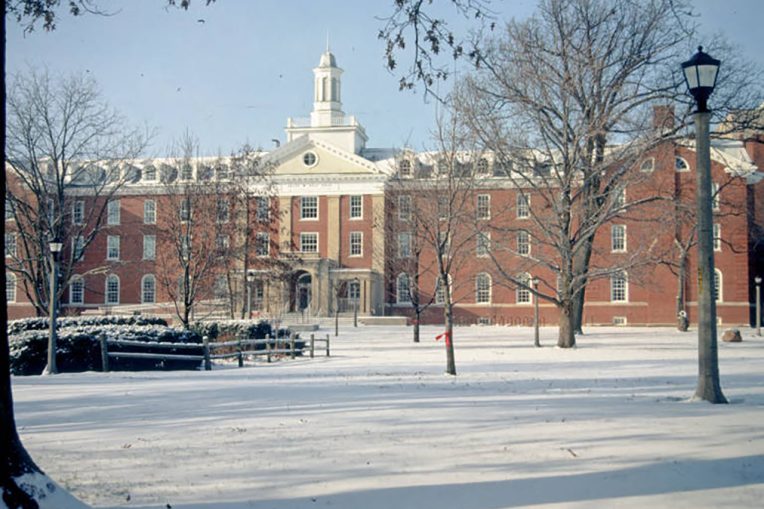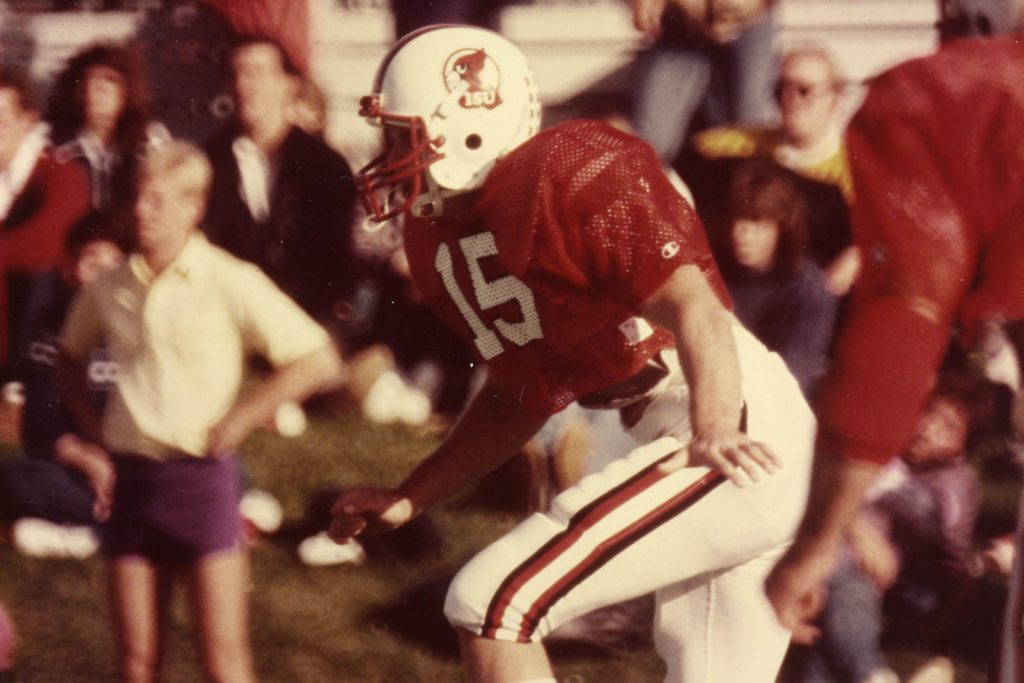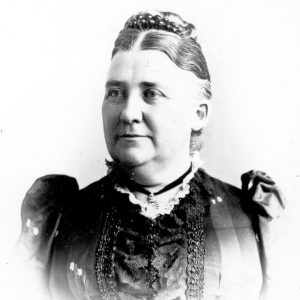From ringing in the new year on campus more than a century ago to remembering Sarah Raymond Fitzwilliam, historian Tom Emery explores this month in Illinois State University history.
January 1
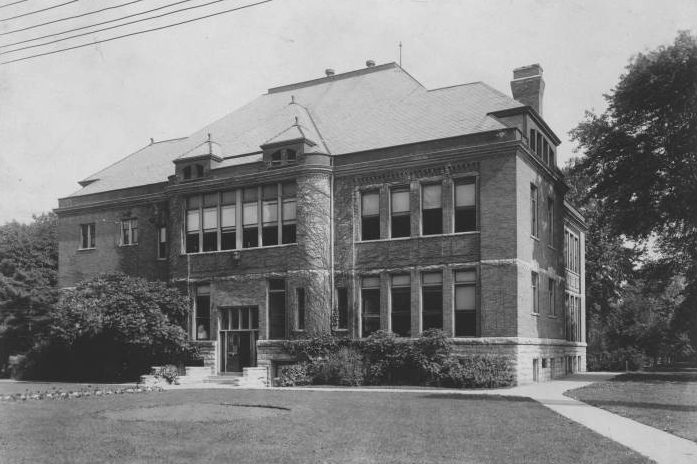
On this date a century ago, many Illinois State students found a way to celebrate the New Year’s holiday. Some just enjoyed the moment, while others embarked on life-changing decisions.
Many ISU students kept on working. During the holiday break of 1917-18, the library was closed, as the Vidette reported, “all Christmas week, but open all of the second week excepting New Year’s Day.” It was the same in 1924-25.
Sometimes, members of the ISU community spent New Year’s Day far away from Illinois. In 1935, longtime dean Ralph Linkins took a tour of the South over holiday break with his sister and brother-in-law, visiting Nashville, Tennessee, Birmingham, Alabama, Tallahassee, Florida, and St. Petersburg, Florida. The Vidette cracked that “his prize remembrance of the trip is a brilliant sunburn acquired on New Year’s Day” in Florida.
In some instances, ISU students were married on January 1. In 1902, the Vidette reported that Gertrude Baldwin, an ISU student in 1895-96, wed Harvey Brown, a farmer in Fulton County. The ceremony was held at the bride’s home in Ipava. The Vidette added that the new couple “left at once for a month’s visit at Hot Springs, Arkansas, after which they will return to Illinois and begin housekeeping” at the groom’s farm.
On New Year’s Day in 1920, Emma Young, a Normal resident who had graduated from ISU the previous June, wed Charles Cordes. Sadly, Emma did not enjoy her marriage for long. She contracted a severe cold on her honeymoon, which descended into pneumonia, and died on January 15, just two weeks after her wedding. Emma was just 25 years old.
One ISU student met a more humorous fate on New Year’s Day in 1916. The Vidette told the story of a student “known by the name of Jane,” who was “making her way to the Presbyterian church” in Normal “with a kettle full of beans intended for the New Year’s dinner.” As she stepped through “a puddle of nice cool ice water,” she slipped on “the underlying strata of ice and a sudden precipitation was the result.”
Jane managed to save the kettle with “some thoughtful handling,” so “none of the precious contents were spilled” as she “had the experience of a genuine cold water plunge.” While many ISU students found a way to celebrate the New Year in a bygone era, Jane was left with a less cozy outcome.
January 13
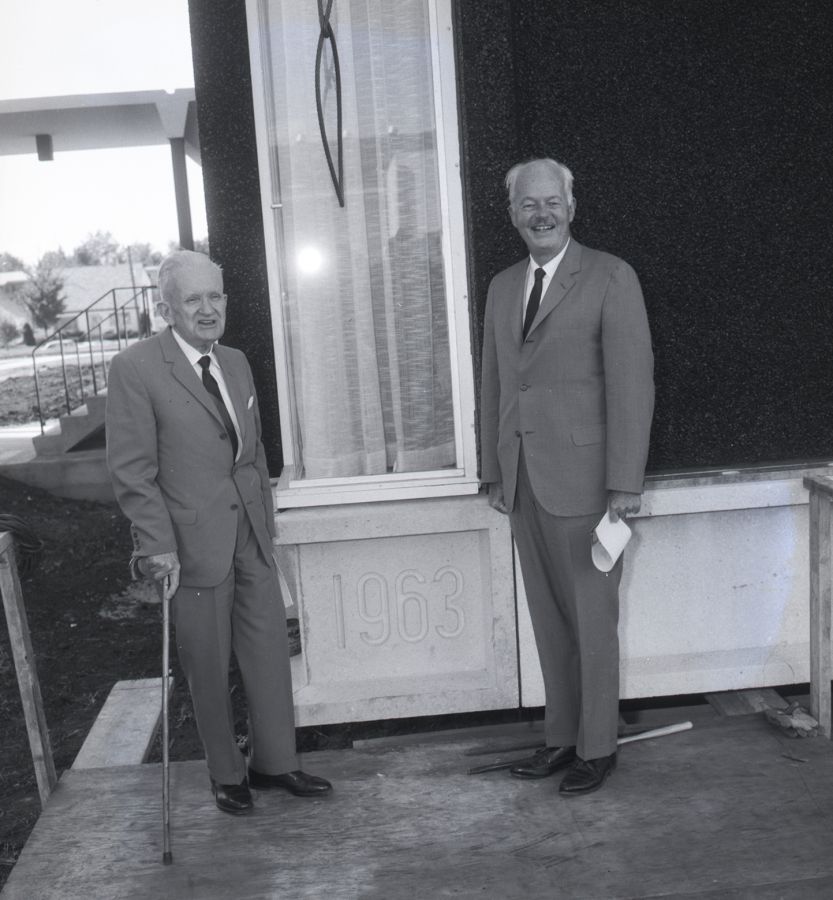
On this date in 1991, Robert Gehlmann Bone, the ninth president of Illinois State University and one of the most popular leaders in campus history, passed away.
Bone served as university president from 1956-67, and during that time, Illinois State rose from a small teachers college to a well-rounded national university. The evolution was reflected in the change of the name of the institution from Illinois State Normal University to Illinois State University, which was adopted in 1966.
Born in Springfield on June 2, 1906, Bone had taught around the world before coming to Illinois State. His first teaching experience was in law and English at the American School of Alexandria, Egypt. He also played a pivotal role in founding American University in England, serving as the new school’s history department chair.
By the mid-1950s, Bone was a longtime history professor at Illinois who had also served as the acting dean of the College of Education and assistant provost. In 1956, the Teachers College Board approached Bone about assuming the presidency of Illinois State. However, he was reluctant, and actually removed his name for a while before reconsidering. He was inaugurated as Illinois State president in 1956.
Legions of Illinois State students, faculty, and staff are glad Bone changed his mind. When Bone arrived in Normal, campus enrollment hovered around 3,200 students. At his retirement 11 years later, enrollment had jumped to 11,000.
During Bone’s tenure, the name of the school, “Illinois State Normal University,” was changed to Illinois State University at Normal in 1964, then again to the present-day Illinois State University in 1967.
On October 5, 1965, the Illinois Board of Higher Education authorized academic programs that did not require teacher certification. The change was made on the 108th anniversary of the first classes at Illinois State. The Board of Governors authorized a number of the new academic programs, which became effective in September 1966 and made Illinois State a true liberal-arts institution.
The physical campus also grew exponentially under Bone with the erection of the South Campus complex, the Tri-Towers, the East Campus complex, Watterson Towers, Schroeder Hall, Centennial Hall, Turner Hall, Horton Field House, Hancock Stadium, and University High School, as well as a new incarnation of Cardinal Court.
However, Bone is best remembered for his engaging personality, as he knew many students by their first names, memorizing their names from the yearbook and repeated contact. At sporting events, Bone often appeared in a bright red vest, a measure of school spirit. Many alumni of the era still speak reverently of him.
Today on campus, the Hand of Friendship, a statue in Bone’s honor presented by the ISU Class of 1967, is a striking tribute to his tireless devotion to the University.
In addition, the ISU student center was named in Bone’s honor in 1982 during ceremonies to honor the 125th anniversary of Illinois State. Bone is buried in Springfield’s Oak Ridge Cemetery, where Abraham Lincoln also rests.
Today, Bone’s sweeping legacy is seen not only in the myriad of physical improvements at ISU during his tenure, but also in the countless lives that he touched with his warmth and grace.
January 26
On this date in 1997, the Green Bay Packers rolled past the New England Patriots, 35-21, to win Super Bowl XXXI. Safety Mike Prior ’85 had an interception in the game for the Packers.
It was a highlight in a 13-year NFL career for Prior, who was a two-sport student-athlete at Illinois State. A three-time NCAA Division I-AA All-American in football, he also holds multiple records for the Redbird baseball program.
A product of Marian Catholic High School in Chicago Heights, Prior, a defensive back and punt returner, earned four letters in football for Illinois State from 1981-84. He was the Redbirds’ Most Valuable Player in both 1982 and 1984.
A three-time first-team All-Missouri Valley Football Conference pick, Prior holds Illinois State records in career punt return yards (906) and career interceptions (23). He is second all-time at Illinois State in punt return yards in a season (436).
Prior was also a baseball standout, as he holds the school record for batting average at .388. He is the Redbirds’ career leader in slugging percentage and was the MVP of the 1984 team.
Not surprisingly, Prior was drafted by both the NFL and Major League Baseball and is only the third student-athlete in Illinois State history to be drafted by two major sports leagues.
After spending his rookie season with the Tampa Bay Buccaneers in 1985, Prior joined the Indianapolis Colts in 1987 and was the usual starter in the defensive backfield from 1988-92. He recorded a career-high 113 tackles for the Colts in 1990.
He signed with Green Bay in April 1993 and played in back-to-back Super Bowls with the Packers in 1996 and 1997. Prior was one of six captains on Green Bay’s Super Bowl champion team of 1996.
In his NFL career, Prior appeared in 198 games, with 85 starts, and recorded 35 interceptions. In 1991, Prior was inducted into the Illinois State Athletics Percy Family Hall of Fame. He earned a spot in the Missouri Valley Conference Hall of Fame in 2020.
Since 2005, Prior has served as the Youth Football Commissioner for the Indianapolis Colts and has spent the last 18 years as an assistant coach at Cathedral High School in Indianapolis, one of the premier high school programs in the state of Indiana.
January 31
On this date in 1918, Sarah Raymond Fitzwilliam, a member of the Illinois State Class of 1866 and the first woman to serve as superintendent of Bloomington schools, died.
Fitzwilliam overcame sexism and ignorance as she compiled a sterling record in her tenure as Bloomington superintendent from 1874-92. Prior to that, she challenged her own school board by allowing African American students to attend her grade school in Bloomington, breaking with the accepted practice of segregation.
Clearly, Fitzwilliam was not afraid of a challenge, or taking a stand. Born in Kendall County on October 11, 1842, she was the daughter of the county sheriff and, like the rest of her family, was a fervent abolitionist. The Raymond home was a stop on the Underground Railroad.
Raymond was a schoolteacher in Kendall County before enrolling at Illinois State in 1862. She graduated in 1866, part of the seventh class in ISU history.
In 1868, she landed a teaching job in Bloomington at School No. 5, now the site of Bent Elementary at Walnut and Roosevelt. One Bloomington newspaper wrote that School No. 5 was full of “wild and prankish pupils,” but Raymond, as usual, took on the challenge. With her guidance, School No. 5 became “one of the best and brightest schools in all the region.”
After just a year, she was named principal of School No. 5. While there, an African American family petitioned to have their children attend School No. 5, which was just a block from their home. Their other choice was School No. 3, a segregated school 14 blocks away.
Raymond allowed the students to attend School No. 5, a move that was challenged in court. In June 1871, a McLean County judge upheld segregation. It was a temporary defeat for Raymond, who was ahead of her time. In 1874, three years later, the state banned segregation in schools.
In 1872, Raymond transferred to the high school and was named principal a year later. In 1874, she became the first female school superintendent in Bloomington history.
Raymond inherited a position that was rife with problems, including a huge debt, poor bookkeeping, and a curriculum in disarray. Raymond quickly went to work.
She greatly improved communication with the community and standardized the curriculum and teaching methods. Raymond also published a manual of instruction, which was printed in two editions and became a national model. By 1881, the school district’s debt had been completely wiped out.
Corporal punishment was eliminated under Raymond, and tardiness dropped 70% in her first four years on the job. Similarly, disciplinary suspensions dropped 96% during her tenure.
Raymond resigned in 1892 and moved to Boston, to be closer to family. While there, she married Capt. Francis Fitzwilliam, whom she had met in Bloomington, in 1896. They settled in Chicago, where he died three years later.
Sarah remained in Chicago and continued her devotion to education and community service, both in her adopted city as well as Bloomington. An active statewide force in the Daughters of the American Revolution, she was instrumental in the creation of the Trotter Fountain, a Bloomington landmark.
Sarah Raymond Fitzwilliam died on January 31, 1918, and is buried in Bloomington’s Evergreen Memorial Cemetery. The Sarah E. Raymond School of Early Education in Bloomington is named in her honor, one of many legacies from a distinguished early graduate of Illinois State.
Tom Emery is a freelance writer and historical researcher who, in collaboration with Carl Kasten ’66, co-authored the 2020 book Abraham Lincoln and the Heritage of Illinois State University.
